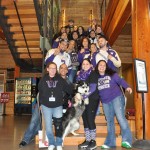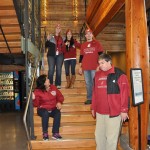Category: Tulalip News
Learning to live with, and heal from, generational trauma
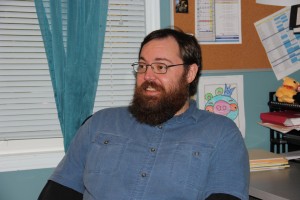
Andrew Gobin/Tulalip News
By Andrew Gobin, Tulalip News
TULALIP − “It’s about language and perspective. How issues are talked about. How issues are presented and received,” said Ryan Akin, one of the new additions to the child and family therapy team at beda?chelh. As he transitions into his position in the Tulalip community, Akin discusses his views on mental wellness and what it takes to get there.
“I’d like to explain a little bit about what I do,” he began. “I am a counselor, not a therapist. Therapy in practice works to identify a problem and help people fix that problem. Counseling moves away from the very sanitized and sterile practice of therapy, focusing on people. Everyone here is an individual. We respond to the person, not the issue.”
Grief counseling is one aspect of his job, and in an effort to understand the people he is working with, he was encouraged to attend a funeral service for a tribal member to experience the grief of the family and the community. He offered grief counseling to kids for a week following the funeral.
“This is so different than the institutionalized idea of people. Rather than learning about them and their needs, I live with them and experience who they are in order to understand their needs,” Akin explained.
The Tulalip community is unique, as are most tribes. They have a history of generational trauma intertwined with tradition and cultural revitalization.
“Understanding generational trauma is integral in helping people to wellness. You have to know that each piece that shapes behavior potentially stems from these traumas. It’s the difference between ‘and’ and ‘but’. I’m trying to be ok but I have this trauma, versus, I have this trauma and I will be ok.”
Ultimately, Akin’s goal is to help remove the generational trauma Tulalip people, and all Indian people, have been steeped in. Healing the community now will prevent the coming generations from experiencing these same traumas.
“We focus on the small steps towards healing, not the five to ten years it takes to get there. This is not a doctor’s office. There is no checklist or agenda. It is based on the person.
“For Indian people, the road to wellness is more like a filter. Holding on to what was, bringing that forward to what is now, and looking to what will come next, while continuing to bring the past forward,” he concluded.
Akin acknowledges the team of counselors he has joined. It is their joint work to promote mental wellness and work towards building a strong connection with the community in order to create a comfortable and safe environment for everyone.
“I want people to understand what we do here. I want anyone to be able to come and talk about things that we can help them with,” he said.
For more information contact Ryan Akin at rakin@tulaliptribes-nsn.gov, or by phone at (360) 716-3284.
Andrew Gobin: 360-716-4188; agobin@tulaliptribes-nsn.gov
Officials from the Marysville School District hold break out sessions working to improve community schools
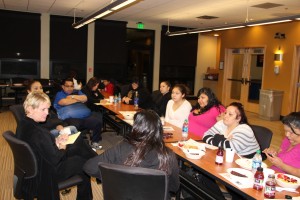
Andrew Gobin/Tulalip News
by Andrew Gobin, Tulalip News
TULALIP − Coming to the MarysvilleSchool District, Dr. Becky Berg aimed to “hit the ground running,” according to the Marysville Globe. True to her word, Berg wastes no time when it comes to improving community schools. On November 14th, she and other district officials held a community meeting at the TulalipAdministrationBuilding, the first in a series of meetings, in order to identify concerns and provide information about this year’s levy.
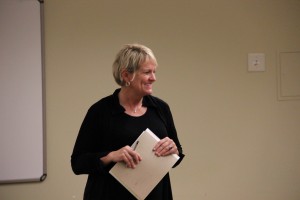
Andrew Gobin/Tulalip News
“We want to hear from you all,” Berg said. “What are the concerns you have about your schools? What are some positive things or what would you like to see continued?”
Two breakout sessions, facilitated by Berg and assistant superintendent Ray Houser, were a forum where the community spoke on a personal level with district officials, discussing their past experiences attending Marysville schools or having children attend Marysville schools, what works in the district, changes that they’ve seen, improvements that need to be made, and programs they’d like to see developed. One major issue raised by parents and teachers at the meeting was the drastic educational gap in the classroom.
“We have high school math classes with students meeting and exceeding their level, mixed with students that are stuck at a 5th grade level,” said heritage principal Shelly Lacey.
Other topics discussed were programs that have been cut, including evening transportation after extra curricular activities like sports, band, clubs, etc., and problems with the schools’ environment such as bullying, apathetic staff, and teachers uninterested in whether or not students learned.
“We don’t feel welcome. Our kids feel unwelcome at school, and we as parents feel that we can’t approach the teachers,” said Misty Napeahi. She has children in school now, as well as graduates of the MarysvilleSchool District.
Many of these issues were addressed in the levy presentation that followed the discussions, which highlighted specific areas that need improvement. Line items included in the levy are programs for high achieving students, students needing to be brought up to grade level, transportation, teachers and aides, support staff (nurses, counselors, etc.), staff training and development, extra curricular activities, and upgrading district technology, each addressing various academic needs. Each of these items discussed, as well as dollar allocations, emphasized the levy as the means to helping every student to succeed. The support staff and staff development portions are crucial to changing the environment of Marysville schools, which is a constant concern at Tulalip.
Upgrading technology and accessibility may be the most crucial for academic success at the current time.
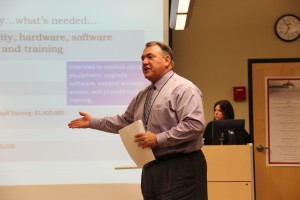
Andrew Gobin/Tulalip News
“We spent all the time, money, and effort to put in the fiber-optic network we have now, yet it remains inaccessible because of a lack of hardware,” said Jim Baker, the district’s executive director of finance. “With the proper tools and training, we hope to improve student performance in the classroom, as well as the effectiveness of the teachers.”
District officials stressed the need for the levy to pass in order to provide better resources in the classroom.
“As it stands, there is more advanced technology and capable users at McDonald’s than there is in our schools,” noted Berg.
This levy truly is all encompassing, addressing academic, structural, and environmental needs. If passed, the levy stands to increase funding for these programs by $85 million over the next four years. The issues discussed at this and other community meetings will be deciding factors in how the money is spent, specifically with regards to staff development. The next community meeting and levy presentation is slated for December 4th of this year, 6:00 pm at the district office. More information is available on the district website, or you may call the district office at (360) 653-7058.
Andrew Gobin: 360-716-4188; agobin@tulaliptribes-nsn.gov
What 10 percent can do for you

No Excuses: Fiscal responsibility and financial planning
By Andrew Gobin, Tulalip News
Tulalip − With the holidays coming into full swing and people struggle to make ends meet, family budget and financial planning are too often a second thought.
“In general, American families lack budgeting and financial planning,” said Dave McLean, the housing finance and budget advisor at Tulalip.
“The best thing families can do is sit down and specify their needs and wants. Bills and groceries are needs, for example. Make a financial plan and budget to cover your living costs, then the rest of your money can go towards purchasing things you want, or into savings. As a general rule you should save about 10 percent of each check,” explained McLean.
A financial plan that includes allocating money to savings sets you up for success later on in life.
“Start at 10 percent,” said McLean. “Ideally it should be more than that, but it’s specific to each budget. When you want to buy a house, the down payment is typically 5 percent of the total cost of the house. Your savings should be enough to cover that. Continue saving money and grow your nest egg. The money you put away should see you through your retirement, in addition to any retirement plan or pension you may have.
“Credit is another aspect of fiscal responsibility. Financial planning will assist you in paying off large dividends, like a car payment, and monthly bills, all of which build your credit. How much money you save plays into that as well.
“Credit cards are great at establishing credit early on, but should be used carefully. Be sure to eliminate your incurred debt as soon as possible. The best plan is to pay off your credit card each month, both building your credit score while sticking to your budget.”
Not everyone has the necessary skills to budget effectively. McLean mentions that there are numerous budgeting classes offered at community colleges, churches, and even suggests budgeting manuals that can be found at the library.
Mclean said, “Nobody has an excuse not to pay more attention to budgeting. It is an important skill that will help everyone later in life.”
Fall Lushootseed Family Nights
Tulalip Husky and Cougar fans show their colors
Photos by Monica Brown
TULALIP Wash. – Fridays are usually reserved for Seahawks Blue Friday but this Friday, Tulalip Admin employees decided to sport their Husky or Cougar attire instead.
Click photos to view larger image.
Continuing Education Funding at Tulalip
By: Jeanne Steffener, Higher ED
What is continuing education? This is an all-encompassing term within a broad spectrum of post-secondary learning activities and programs. Continuing education in the context of Tulalip Tribes Higher Education includes funding for Tulalip members for credit courses for non-traditional students, non-degree career training for employees (trainings, conferences and seminars), workforce training, formal personal enrichment courses, self-directed learning and cultural learning (i.e. basket weaving, Looshootseed language, carving, etc.)
The method of delivery of continuing education can include traditional types of classroom lectures and laboratories. However, some continuing education programs make use of distance learning, which not only includes independent study, but can also conclude CD-ROM material, broadcast programming or online education.
Funding for Continuing Education would encompass tuition, books, registration fees, and supplies (one (1) request per year). Funding for Continuing Education courses cannot be used in conjunction with other funding for college/university/vocational/technical education per the Higher Education Policy. Continuing Education requests sent by employees are sent directly to the training/travel department for processing, approval and funding allocations. This would include trainings, conferences and seminars.
If you are interested in availing yourself of Continuing Education courses and opening up your opportunities, simply pick up your phone and dial 360-716-4888 to contact the Higher Education Department for further questions and information.
Jason Schilling, Wildlife Biologist at Hibulb, Nov 14
Please come and enjoy Jason Schilling, Wildlife Biologist, discuss his mountain trek experiences.
Jason will share highlights of his experiences during mountain treks, from the North Cascades to his recent Miyar Valley expedition in India.
Thursday, November 14, 7pm at the Tulalip Hibulb Cultural Center, Classroom 2
A day of remembrance: Veterans honored at Hibulb luncheon
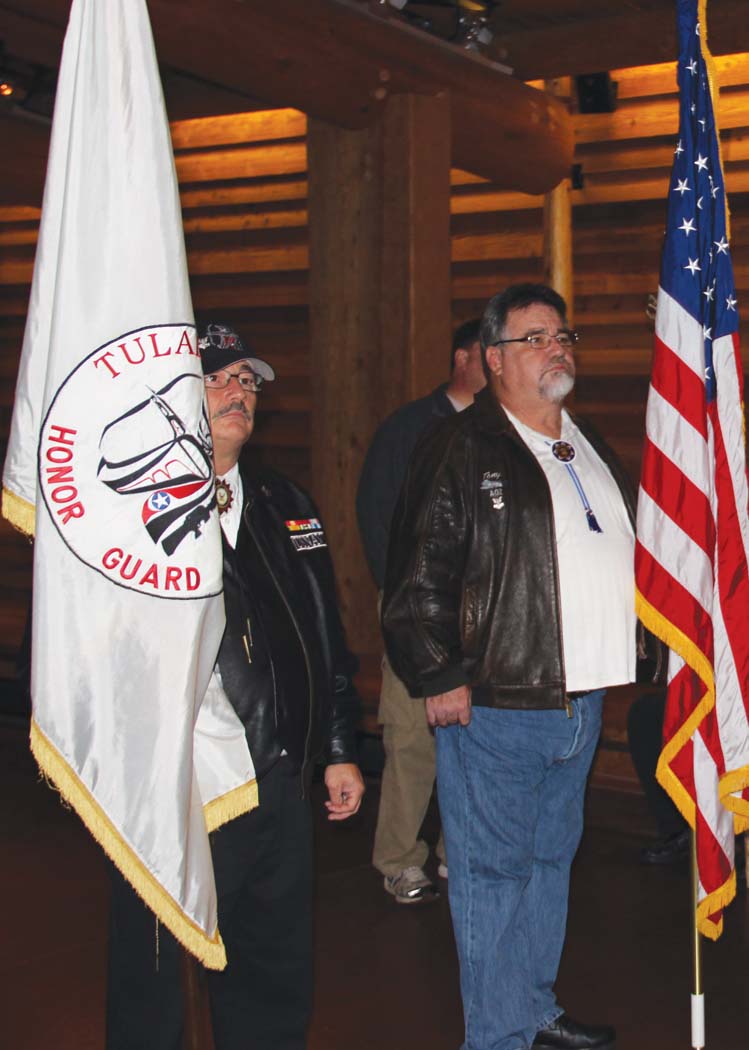
colors at the Veterans Luncheon.
Photo: Andrew Gobin, Tulalip News
By Andrew Gobin, Tulalip News Reporter
Veterans and their families packed the Longhouse at the Hibulb Cultural Center & Natural History Preserve on Monday, November 11th. The event hosted by Hibulb staff, which was open to all veterans in the Tulalip community, featured a lunch incorporating traditional foods in addition to an honoring and healing ceremony. Veterans that spoke reminded those in attendance about the sacrifices made by soldiers and their families, emphasizing the importance of remembering the cost of the world we live in.
With the presentation of the colors by the Tulalip Honor Guard, the Veterans Day celebration began. Each veteran was thanked with a blanket, introducing themselves while taking a moment to speak about their service. Some listed their rank and various wars and theaters, while others spoke about what Veterans Day means to them.

Photo: Andrew Gobin, Tulalip News
“It’s important to remember the veterans and to thank them,” said Tulalip Chairman Mel Sheldon, a Vietnam veteran. He referred to the ill tempers and bad attitudes that Americans had towards the Vietnam War, and in turn, how poorly returning soldiers were treated. “Today is a day to honor the sacrifice made. When war came you raised your hand, and we thank you for your service.”
“It is important to remember the families and their sacrifice,” said veteran, David Ventura. “They had to sacrifice time with their sons and brothers, and many times a life shared. Mothers, fathers, wives, brothers and sisters all had to live with the uncertainty of someone they loved dearly, for the service they gave to this nation.”
Korean War veteran Ray Moses spoke about the horrors of war.
“When I was in Korea,” he began, “my brother was killed right along side me. That moment was the most helpless feeling I have ever experienced. I couldn’t cry; I couldn’t get mad. All I could do was keep fighting. I had to. The worst memories I have are about death.”
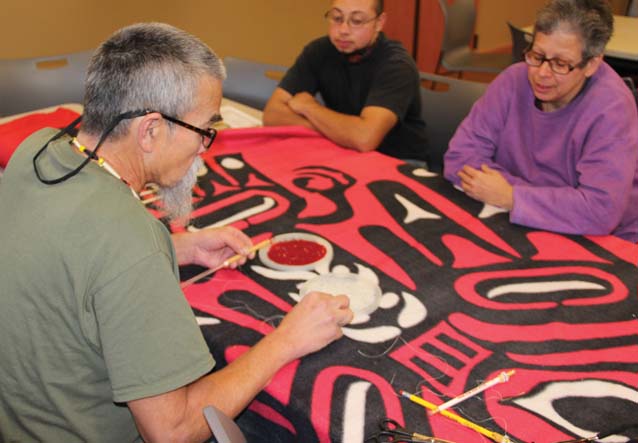
Photo: Andrew Gobin, Tulalip News
He paused a moment. “Why do I tell you these things? People these days say, ‘we don’t want to hear that, those old things.’ And I tell them, without those old things all these new things wouldn’t be here.”
Hibulb staff served a lunch of fry bread and hamburger stew, along with traditional foods including mushrooms, nettle tea, and black moss pudding, which in our culture is a medicine for calming the spirit and mind.






